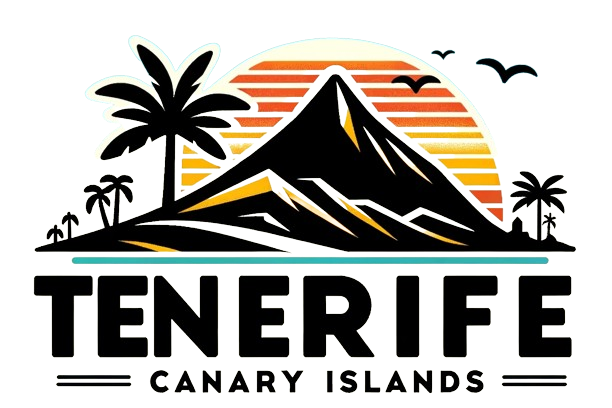Santa Cruz de Tenerife, often referred to simply as Santa Cruz, is a vibrant and culturally rich city that serves as the capital of the island of Tenerife, the Province of Santa Cruz de Tenerife, and one of the capitals of the Canary Islands, sharing this honor with Las Palmas. Here’s a closer look at this dynamic and diverse city:
Population: With a population of 206,593 within its administrative limits as of 2013, Santa Cruz de Tenerife is a bustling urban center that draws residents from across Tenerife and beyond. The urban zone of the city extends even further, accommodating approximately 507,306 people, while the broader urban area encompasses around 538,000 residents. This makes Santa Cruz the second-largest city in the Canary Islands and the primary city on the island of Tenerife, with nearly half its population residing in or around it.
Geographical Location: Santa Cruz is strategically situated in the northeast quadrant of Tenerife, approximately 210 kilometers (130 miles) off the northwestern coast of Africa, within the vast expanse of the Atlantic Ocean. The city’s unique location places it at a distance of 1,300 kilometers (810 miles) from mainland Spain. It serves as a vital communications hub, connecting Europe, Africa, and the Americas, with its bustling port welcoming cruise ships from various nations.
Historical Significance: Between 1833 and 1927, Santa Cruz de Tenerife was the sole capital of the Canary Islands. However, in 1927, a decree was enacted to share the capital status with Las Palmas, a designation that remains in effect today. The city has a rich historical heritage that reflects the island’s role as a crossroads of cultures and trade throughout the centuries.
Cultural and Architectural Treasures: Santa Cruz boasts an array of architectural marvels that showcase its cultural diversity and contemporary vision. The Auditorio de Tenerife often hailed as a pinnacle of contemporary architecture graces the city with its striking design. The Torres de Santa Cruz, the tallest twin towers in Spain at 120 meters (390 feet), punctuate the skyline. The Plaza de España serves as the city’s bustling nerve center, while the Parque García Sanabria provides a green oasis in the heart of the urban landscape.
Natural Beauty: Beyond its urban vibrancy, Santa Cruz de Tenerife is surrounded by natural beauty. Playa de Las Teresitas, a stunning beach, lies within the city’s municipal district, offering a place for relaxation and recreation. The Macizo de Anaga was declared a UNESCO Biosphere Reserve in 2015, encompasses a significant portion of the area, and provides opportunities for exploration in its rugged terrain.
Carnival Capital: Santa Cruz is renowned for hosting one of the world’s largest and most exuberant carnivals. The Carnival of Santa Cruz de Tenerife is a spectacular celebration that aspires to become a UNESCO World Heritage Site. It is second in size only to Rio de Janeiro’s carnival.
Modern Skyline: The city’s skyline is a testament to its modernity and growth. Santa Cruz de Tenerife ranks as the sixth tallest city in Spain, with a skyline with impressive structures.
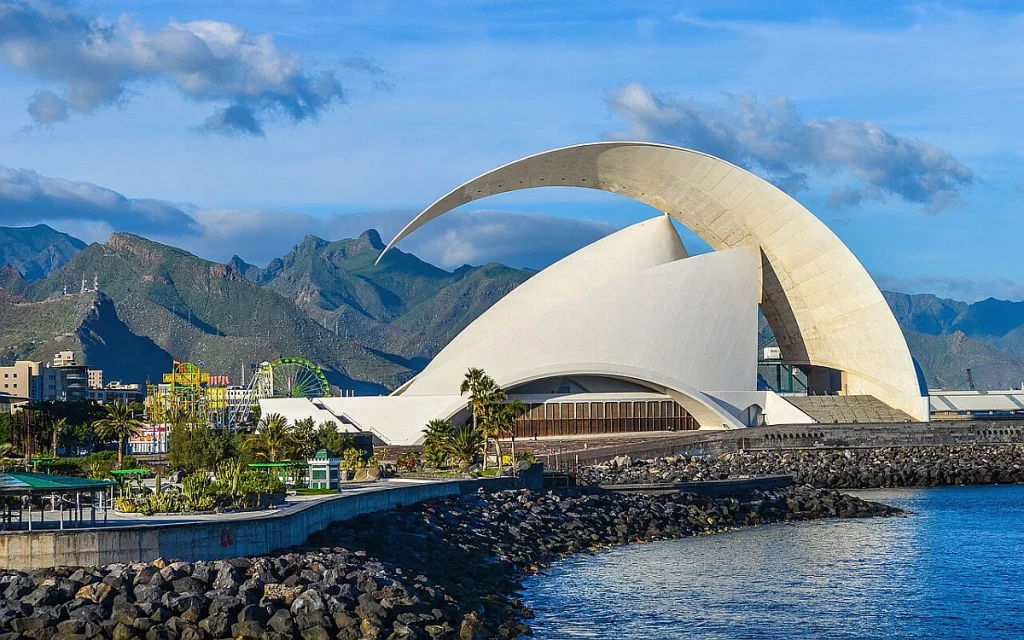
Santa Cruz de Tenerife’s unique blend of history, culture, natural beauty, and modernity makes it an enchanting destination for residents and visitors alike. It has garnered international recognition for its quality of life, earning a place on The Guardian’s list of the five best places in the world. The city’s commitment to preserving natural areas also sets it apart, with a significant percentage of its municipal territory dedicated to natural spaces, including the Anaga Rural Park. Santa Cruz de Tenerife’s allure lies in its ability to seamlessly balance tradition with progress, offering a dynamic and welcoming environment in the Canary Islands.
Santa Cruz de Tenerife: A Vibrant Metropolis Blending Canarian Culture with Modern Sophistication
Santa Cruz de Tenerife, the bustling capital of the Canary Islands, is a city where tradition meets modernity, creating a vibrant and diverse urban landscape. This guide takes you through the bustling streets, cultural landmarks, and natural wonders that make Santa Cruz de Tenerife a must-visit destination.
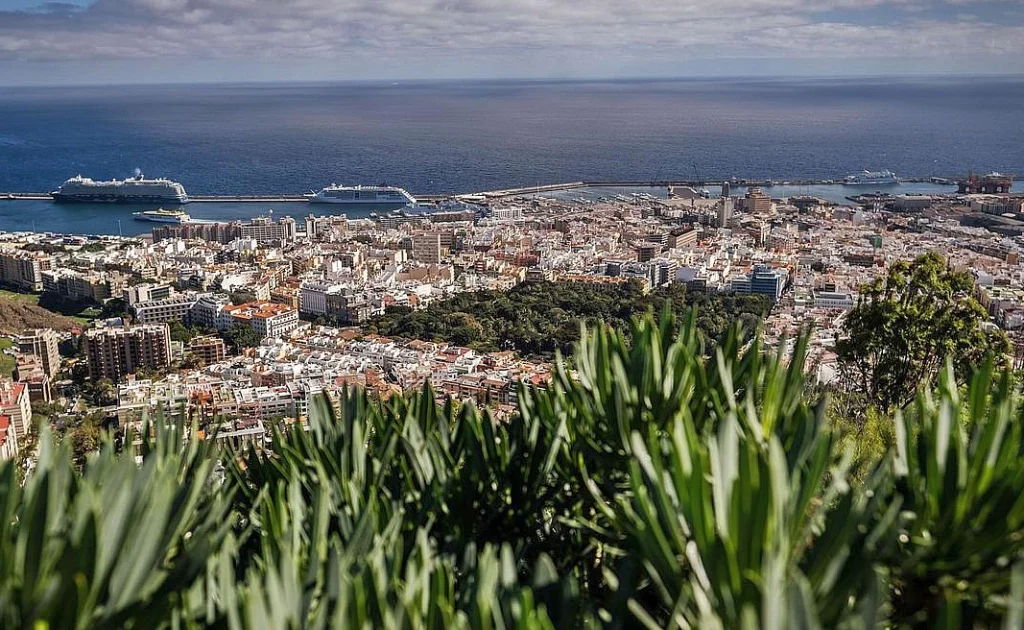
Exploring the Heart of Santa Cruz de Tenerife
Santa Cruz, the vibrant capital of Tenerife, is a city that pulsates life. Its streets are a harmonious blend of historical architecture and contemporary design, reflecting the city’s rich evolution over the centuries. This bustling metropolis is the administrative center and the island’s cultural heart.
Landmarks such as the Auditorio de Tenerife, designed by the world-renowned architect Santiago Calatrava, are a testament to the city’s modern aspirations. With its wave-like structure, this iconic building is an architectural marvel and a hub for the performing arts, hosting various events ranging from operas to symphony concerts.
Equally impressive is the historic Church of the Conception, an emblem of the city’s heritage. This church, originally built in the 15th century and rebuilt in the 18th century, showcases a blend of Gothic and Baroque architectural styles. Its bell tower offers panoramic city views and is a must-visit for those interested in history and architecture.
Santa Cruz is also home to numerous museums, galleries, and cultural institutions, including the TEA (Tenerife Espacio de las Artes), which houses contemporary art exhibitions and a state-of-the-art library. The city’s love for art is evident in its vibrant street art and sculptures that adorn public spaces.
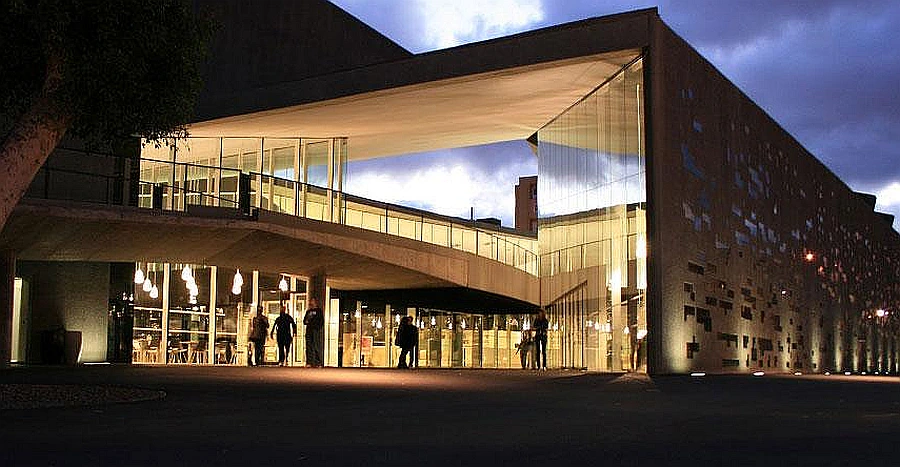
The city’s streets are lined with various shops, from traditional markets like the African Market, where locals and tourists can find everything from fresh produce to artisanal crafts, to modern shopping centers offering international brands. The gastronomic scene in Santa Cruz is equally diverse, featuring a blend of traditional Canarian cuisine and modern culinary innovations.
Moreover, Santa Cruz is surrounded by beautiful natural landscapes, from the lush Anaga Mountains to the serene Las Teresitas Beach, making it a perfect base for exploring the natural beauty of Tenerife.
Santa Cruz de Tenerife is not just a destination; it’s an experience. It’s a city where history and modernity coexist harmoniously, offering something for everyone – from the history buff and the art enthusiast to the avid shopper and the beach lover.
Cultural Richness and Artistic Flair
Santa Cruz de Tenerife, a cultural and artistic hub in the Canary Islands, offers an eclectic mix of experiences for those who appreciate the finer aspects of culture and arts. The city takes pride in its museums, such as the Tenerife Espacio de las Artes (TEA), a striking contemporary structure that not only adds to the city’s modern skyline but also serves as a beacon for contemporary art lovers. Visitors find many exhibitions ranging from avant-garde visual arts to thought-provoking installations, making it a central point for artistic expression in the Canary Islands.
The Museum of Nature and Archaeology is equally significant, a treasure trove for history and nature enthusiasts. This museum offers a deep dive into the islands’ rich natural history and archaeological heritage, showcasing everything from ancient Guanche artifacts to fascinating exhibits on the diverse flora and fauna of the archipelago. Its collections provide valuable insights into the evolution of the islands and the lifestyles of their earliest inhabitants.
The city’s numerous galleries and cultural centers further enrich its artistic landscape. These venues regularly host exhibitions and cultural events, attracting local and international artists. From cutting-edge contemporary art shows to classical painting exhibitions, these spaces offer a platform for diverse artistic expressions.
Santa Cruz is also known for its vibrant events calendar, featuring everything from music festivals and theatrical performances to literary workshops and film screenings. These events entertain and stimulate cultural dialogue and community engagement, reinforcing the city’s status as a cultural hotspot.
In addition to indoor venues, the city’s public spaces are adorned with sculptures and artworks, making art accessible. This integration of art into everyday life is a testament to the city’s commitment to fostering a rich cultural environment.
Whether one is an art connoisseur, a history buff, or simply a curious traveler, Santa Cruz de Tenerife offers a multitude of avenues to explore and appreciate the richness of Canarian culture and arts. The city’s dynamic cultural scene not only entertains but also educates and inspires, making it a must-visit destination for those seeking a culturally enriching experience in the Canary Islands.
Lively Festivals and Events
Santa Cruz de Tenerife is renowned for its exuberant and colorful festivals, with the Carnival of Santa Cruz de Tenerife standing as a dazzling highlight. Considered one of the largest and most spectacular in the world, this carnival is a true embodiment of the city’s vibrant spirit and cultural richness. The city transforms into a kaleidoscope of color and sounds yearly as streets overflow with music, dance, and a parade of stunning costumes.
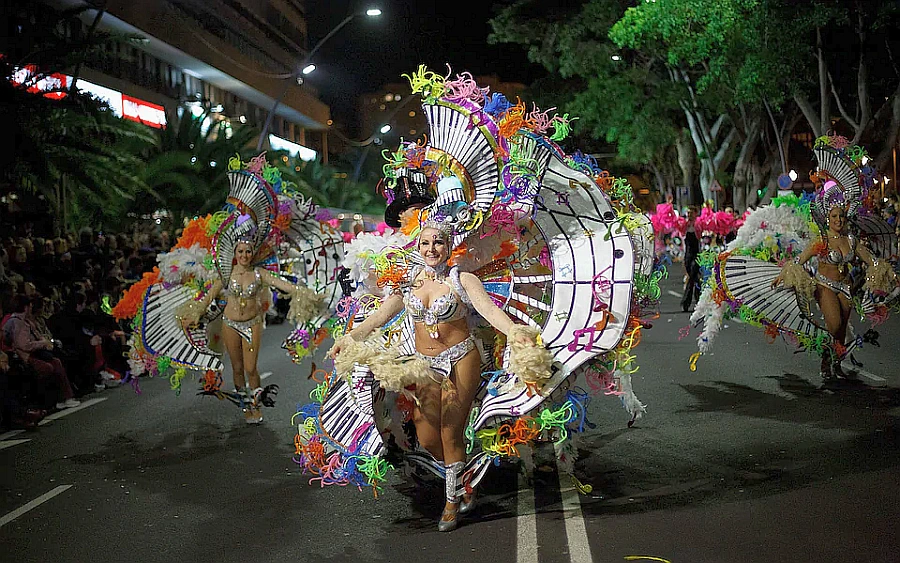
The festivities of the Carnival of Santa Cruz de Tenerife are a feast for the senses. The air fills with the rhythms of Latin, salsa, and contemporary beats, creating an infectious atmosphere that invites everyone to dance. Participants and spectators dress in elaborate and often dazzling costumes, adding to the visual spectacle. The highlight is the Grand Parade, where lavishly decorated floats, exquisitely costumed performers, and enthusiastic crowds create a euphoric celebration of life and culture.
Beyond the grandeur of the parade, the carnival offers a range of events catering to all ages and interests. From the election of the Carnival Queen to the traditional “Burial of the Sardine,” a unique event that marks the end of the festivities, there’s a rich tapestry of customs and traditions to explore. Street parties, known as ‘murgas’, feature satirical performances that blend humor with social commentary, showcasing the locals’ wit and creativity.
The Carnival of Santa Cruz de Tenerife is not just a party; it’s a reflection of the island’s history and cultural identity. It’s a time when the city’s residents and visitors from around the world come together in a shared celebration, transcending language and cultural barriers.
This festival and other yearly cultural events position Santa Cruz de Tenerife as a vibrant epicenter of culture and festivity. The carnival, in particular, is a must-experience event, offering a glimpse into the city’s soul and leaving visitors with unforgettable memories of joy, color, and community spirit. Whether you’re a carnival enthusiast, a lover of cultural experiences, or simply in search of fun and festivity, Santa Cruz de Tenerife’s carnival is an event that truly captures the essence of the island’s exuberant spirit.
A Culinary Adventure Through Canarian Cuisine
Santa Cruz de Tenerife’s culinary scene is a vibrant reflection of its diverse culture, offering a delightful gastronomic journey to locals and visitors alike. This city is a melting pot of flavors where traditional Canarian cuisine meets innovative international gastronomy, ensuring every palate is satisfied.
The local Canarian restaurants are at the heart of the city’s culinary tradition. These establishments are treasure troves of authentic flavors, serving up classic dishes such as “papas arrugadas” (wrinkly potatoes) with “mojo” sauces, fresh seafood like “vieja” (a type of local fish), and hearty stews. These traditional eateries offer a taste of the local culinary heritage and provide a warm, inviting atmosphere that embodies the island’s hospitable spirit.
Santa Cruz’s modern eateries and fusion restaurants present culinary possibilities for those exploring beyond local flavors. From sophisticated fine dining experiences featuring international cuisines to casual cafés offering a fusion of global flavors, the city’s contemporary dining scene constantly evolves, offering innovative and exciting culinary experiences.
The markets are an integral part of the city’s food culture, with the Mercado de Nuestra Señora de África being a standout. This bustling market is not just a place to buy fresh produce; it’s a sensory experience. Here, visitors can explore a variety of stalls selling everything from fresh fruits and vegetables to cheeses, spices, and wines. The market is also great to sample local delicacies, whether freshly caught seafood, artisanal pastries, or exotic fruits unique to the Canary Islands.
Additionally, the city hosts various food festivals and culinary events throughout the year, celebrating everything from local produce to international cuisine. These events are perfect opportunities for food enthusiasts to indulge in new flavors, learn about local culinary traditions, and engage with the vibrant food community of Santa Cruz de Tenerife.
In summary, the culinary scene in Santa Cruz de Tenerife is dynamic and integral to the city’s identity. It invites visitors and locals alike to embark on a gastronomic adventure that spans traditional Canarian dishes to modern, global cuisine, all while soaking in the lively atmosphere and rich cultural tapestry of this enchanting city.
Green Spaces and Natural Beauty
Santa Cruz de Tenerife, while bustling and urban, is uniquely juxtaposed against a backdrop of breathtaking natural beauty, offering a serene escape for those looking to immerse themselves in nature. The Anaga Rural Park, a jewel in the crown of Tenerife’s natural landscapes, is a testament to this. Declared a UNESCO Biosphere Reserve, Anaga is a haven for nature enthusiasts and adventurers. Its ancient laurel forests, some of the oldest on the planet, envelops visitors in a prehistoric ambiance, transporting them to a world where nature reigns supreme. The park’s rugged coastline, with remote beaches and cliffside views, adds to its wild, untouched allure. Hiking trails weave through the park, revealing panoramic vistas, charming hamlets, and a diversity of endemic flora and fauna, making Anaga Rural Park a must-visit for anyone seeking the tranquility and beauty of nature.
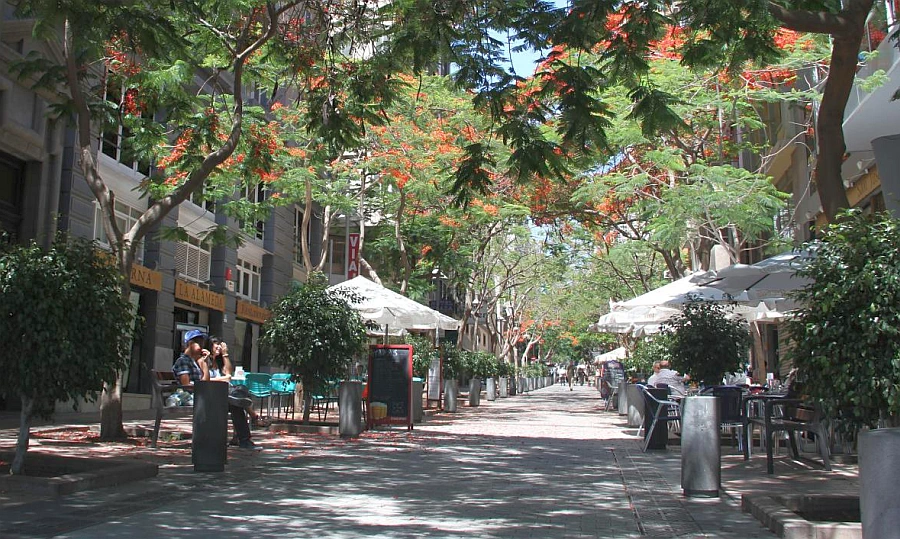
Within the city itself, Santa Cruz de Tenerife offers verdant retreats amidst its urban landscape. Parque García Sanabria, the city’s largest public park, is a prime example. This urban oasis is more than just a park; it’s a living museum of sculptures and a botanical garden. Lush with tropical plants, majestic trees, and vibrant flower beds, the park provides a peaceful respite from the city’s hustle and bustle. Its meandering paths, fountains, and open-air art installations create an environment where nature and culture intertwine harmoniously. The park is a favorite spot for locals seeking a stroll or a quiet moment and a delightful discovery for tourists.
These natural spaces are vital to the city’s identity, contrasting the urban setting and enriching the quality of life for residents and visitors alike. Whether the dramatic landscapes of Anaga Rural Park or the tranquil greenery of Parque García Sanabria, Santa Cruz de Tenerife seamlessly blends city life with the natural world, providing a unique and balanced urban experience. This connection to nature highlights the city’s commitment to preserving its natural heritage. It offers a refreshing perspective on urban living, where the beauty of the natural world is never far away.
Shopping and Leisure in Santa Cruz
Santa Cruz de Tenerife stands out as a shopper’s paradise, offering an extensive array of shopping experiences that cater to every taste and preference. The city’s vibrant shopping scene is a lively blend of traditional charm and modern convenience, ensuring every shopping expedition is enjoyable and unique.
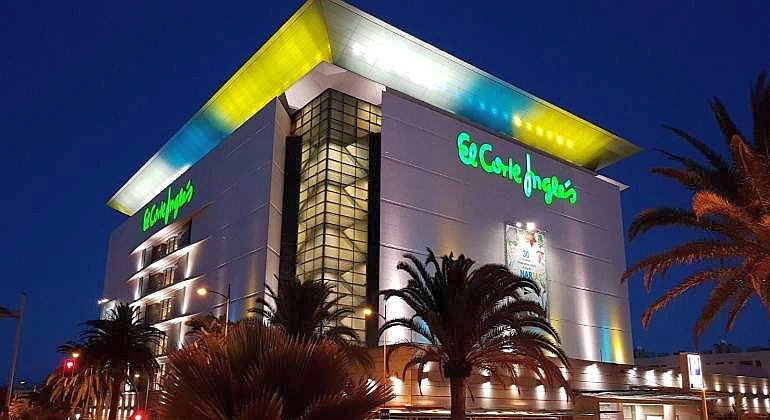
Local boutiques and artisanal shops are scattered throughout the city, offering a glimpse into the rich craftsmanship and unique products of the Canary Islands. These small, often family-run establishments are treasure troves of one-of-a-kind items, from handmade jewelry and fashion to locally produced foods and wines. Shopping here provides a chance to find distinctive souvenirs and gifts and supports the local artisans and their traditional crafts.
The city’s markets are a must-visit for those who prefer a more traditional shopping experience. The Mercado de Nuestra Señora de África, in particular, is a bustling hub of activity where locals and tourists alike come to browse a wide range of goods. From fresh produce and gourmet food items to flowers and textiles, the market offers an authentic taste of the local lifestyle. It is a perfect spot for those looking to immerse themselves in the vibrant culture of Tenerife.
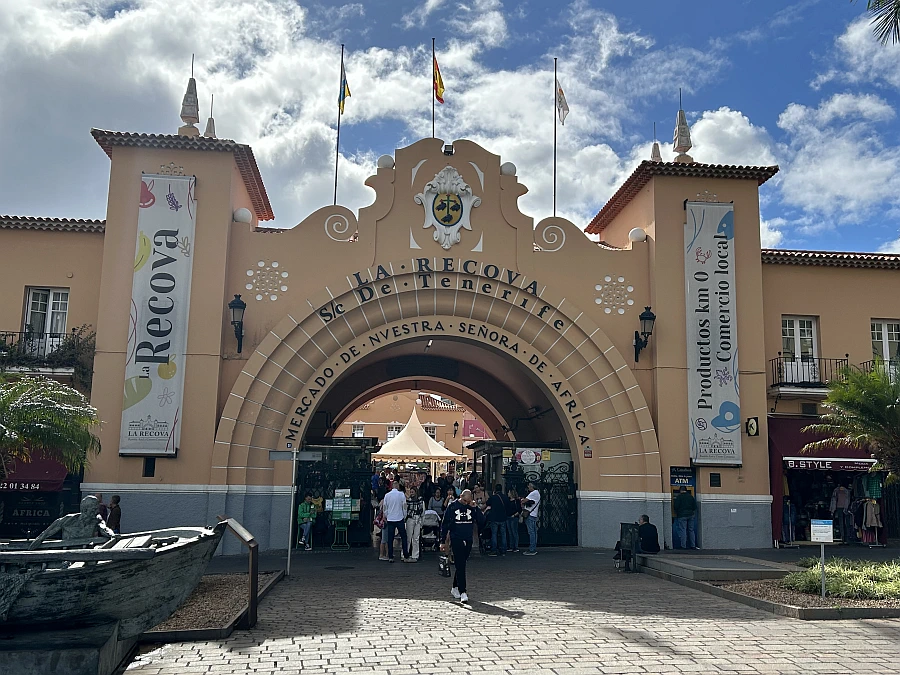
On the other hand, Santa Cruz also boasts several large shopping centers that provide a more contemporary shopping experience. These modern complexes house international and national brands, offering everything from high-end fashion and electronics to beauty products and home goods. With their convenient one-stop-shop format, these centers are ideal for those looking to combine shopping with entertainment and dining options.
The charm of shopping in Santa Cruz de Tenerife also lies in its picturesque streets and plazas, lined with shops and cafes. These areas are perfect for strolls, where one can enjoy the city’s lively atmosphere, stop for a coffee or a bite to eat, and enjoy the Mediterranean lifestyle. The city’s pedestrian-friendly zones, inviting ambiance, and diverse shopping options create a delightful and relaxed shopping experience.
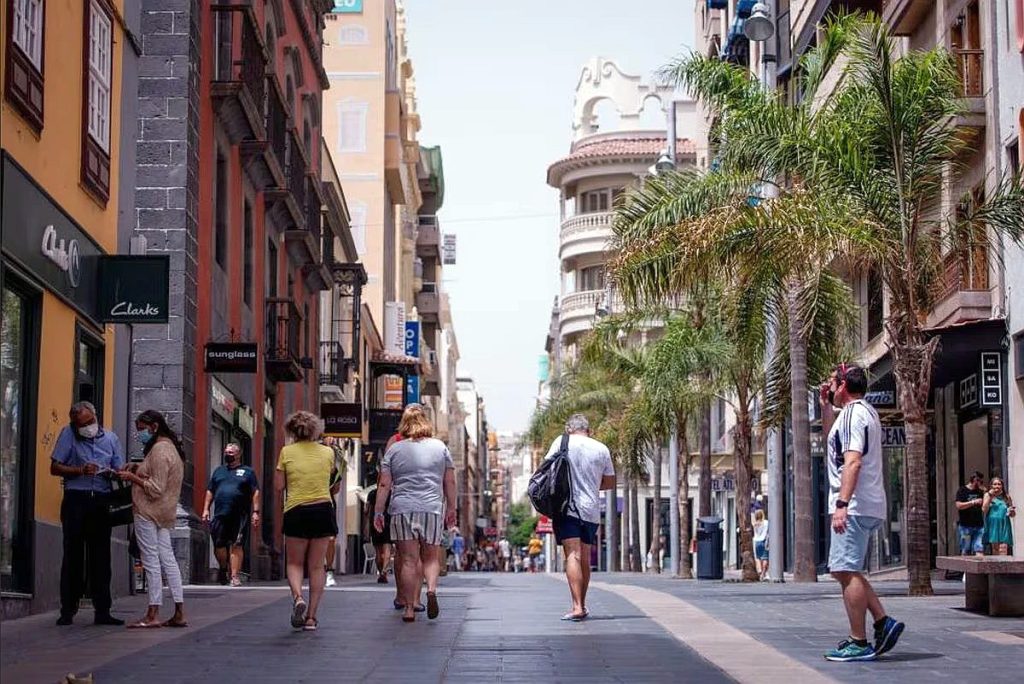
In summary, Santa Cruz de Tenerife offers a diverse and vibrant shopping landscape that ranges from quaint local boutiques and traditional markets to large, modern shopping centers. This variety, coupled with the city’s charming streets and welcoming atmosphere, makes it an ideal destination for those looking to combine shopping with the experience of local culture and lifestyle.
Exploring Beyond the City
Santa Cruz de Tenerife, strategically located and well-connected, serves as an ideal base for exploring the myriad of attractions that Tenerife has to offer. The city’s position on the island provides easy access to various destinations. It encapsulates the essence of convenience and connectivity, making it a perfect starting point for any adventure on the island.
One of the most awe-inspiring destinations easily accessible from Santa Cruz is the majestic Teide National Park. Home to Mount Teide, Spain’s highest peak, this UNESCO World Heritage Site offers a landscape like no other – a mesmerizing mix of volcanic terrain, unique rock formations, and rich flora and fauna. Whether you’re keen on hiking, photography, or simply enjoying breathtaking views, Teide National Park is a must-visit. The park is easily reachable from Santa Cruz by car or through organized tours, providing an unforgettable experience of Tenerife’s natural beauty.
Another gem within proximity is the historic town of La Laguna. Recognized as a UNESCO World Heritage Site, La Laguna is famed for its well-preserved historical center, showcasing a wealth of colonial architecture and cultural heritage. Wandering through its cobbled streets, visitors can immerse themselves in the town’s rich history, visit historic buildings, and enjoy the vibrant local atmosphere. La Laguna, with its blend of history, culture, and academic life, provides a stark yet harmonious contrast to the modern vibe of Santa Cruz.
For those looking to unwind on the beach, the southern coast of Tenerife, with its sun-drenched shores and resort towns, is just a short drive away. Costa Adeje, Los Cristianos, and Playa de las Américas offer golden beaches, clear waters, and many leisure activities. These southern locales are perfect for a day trip to enjoy water sports, sunbathing, or exploring the lively promenades filled with shops, restaurants, and bars.
The city’s excellent transport links, including a well-organized bus network and easy access to major roads, make traveling around the island convenient and enjoyable. Santa Cruz’s central location is an excellent starting point for any itinerary, whether interested in exploring the natural wonders, delving into historical sites, or simply enjoying the island’s diverse beaches and resorts.
The Metropolitan Area of the Santa Cruz de Tenerife-La Laguna
The Santa Cruz de Tenerife-La Laguna Metropolitan Area is a significant urban agglomeration. It is the second largest city and metropolitan area of the European Union, located outside of Europe itself. This thriving metropolitan region is characterized by its dynamic urban environment, diverse population, and interconnected municipalities. Here are some key details about this vibrant metropolitan area:
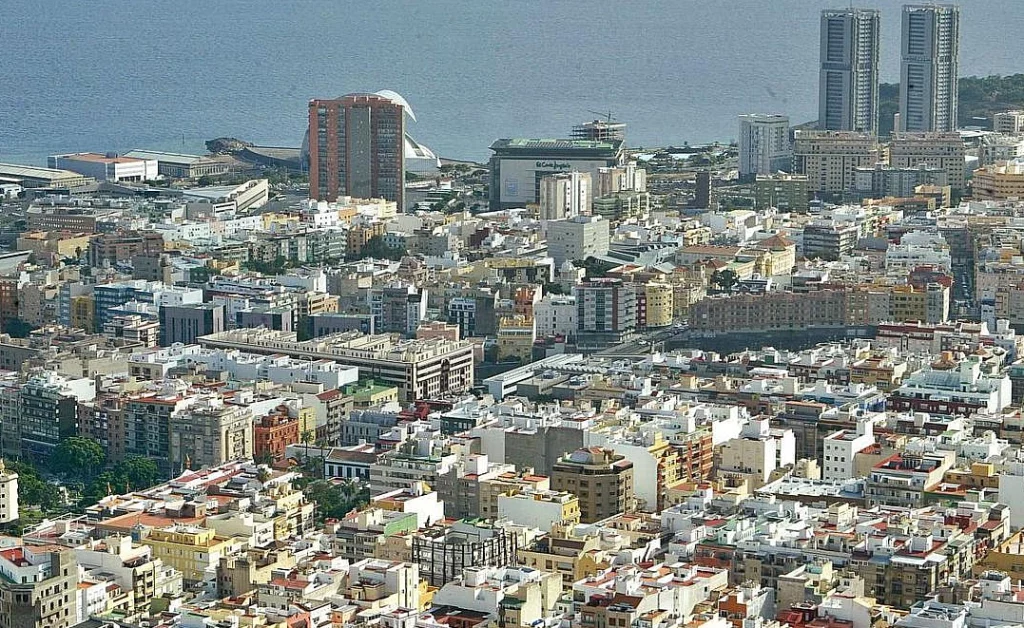
Composing Municipalities: The Santa Cruz de Tenerife-La Laguna Metropolitan Area encompasses several municipalities, including Santa Cruz de Tenerife, San Cristóbal de La Laguna, El Rosario, and Tegueste. These municipalities collectively contribute to the region’s population and economic activity.
Population Density: As of 2008, the metropolitan area had a population of 404,913 inhabitants, covering an area of approximately 322.13 square kilometers (124.38 square miles). This population density was 1,156.33 people per square kilometer (2,994.9 people per square mile). The region’s urban fabric is marked by its bustling streets and vibrant neighborhoods, reflecting the diverse communities that call it home.
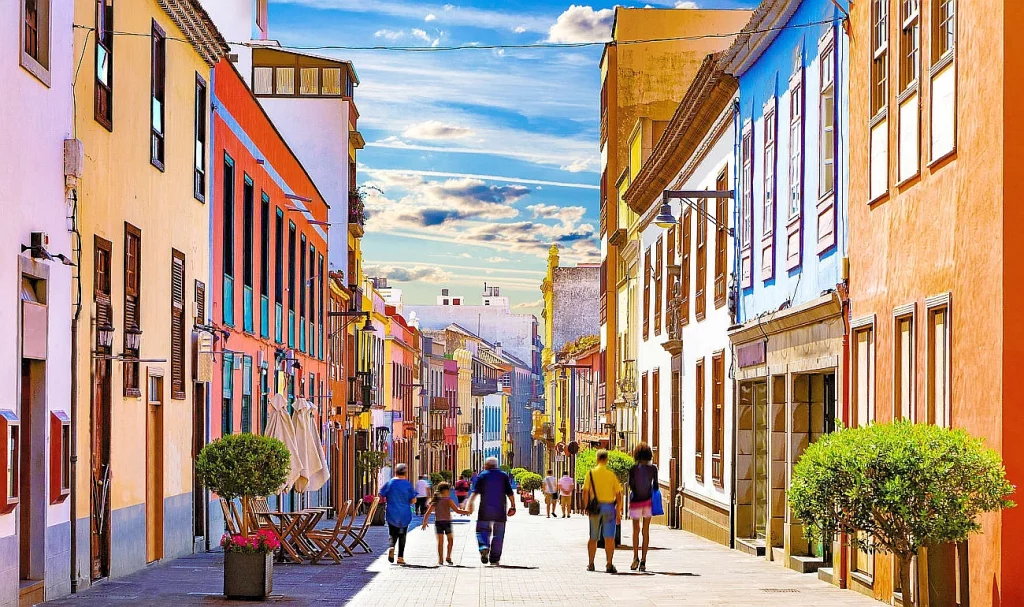
Extended Conurbation: Expanding beyond the initial composition of municipalities, the metropolitan area also encompasses Tacoronte and El Sauzal, contributing to the broader urban landscape. This extension resulted in a total urban population of approximately 581,947 people as of 2008.
Physical Connection: One of the notable features of this metropolitan area is the physical connection between the cities of Santa Cruz and San Cristóbal de La Laguna. These two urban centers are seamlessly linked, creating a continuous urban expanse. This physical connection fosters economic and social interactions, increasing the area’s prominence.
Largest Urban Area in the Canaries: With over 382,331 inhabitants residing in Santa Cruz and San Cristóbal de La Laguna, this metropolitan area ranks as the largest urban area in the Canary Islands. This distinction highlights its role as a major economic, cultural, and social center within the archipelago.
The Santa Cruz de Tenerife-La Laguna Metropolitan Area is a thriving hub that exemplifies the cosmopolitan character of the Canary Islands. Its interconnected municipalities, diverse population, and urban vitality make it a dynamic and influential region in the Canary Islands and the broader European context. The seamless integration of Santa Cruz and San Cristóbal de La Laguna, along with the extension to additional municipalities, underscores the significance of this metropolitan area in the region’s social and economic landscape.
History of Santa Cruz de Tenerife
With its rich and diverse history, Santa Cruz de Tenerife stands as a testament to the evolution of human civilization on the island. Initially known as Añazo or Añaza by the Guanches, Tenerife’s first inhabitants approximately 2000 years ago, the region has a deep-rooted history evidenced by significant archaeological findings. The area was part of the Menceyato de Anaga, one of the nine Guanche kingdoms, with notable archaeological remains like the Mummy of San Andrés and caves with mummified animals and engravings, showcasing the profound indigenous legacy.
The city’s pivotal transformation began on May 3, 1494, when Castilian troops under Alonso Fernández de Lugo landed on its shores. Establishing a military camp marked the beginning of the conquest of Tenerife, changing the course of the island’s history. Alonso Fernández de Lugo’s act of placing a large wooden cross on the day of disembarkation, coinciding with the Catholic festivity of the Invention of the Cross, symbolizes the intertwining of religion and conquest. Following the defeat of the Guanches, the island’s capital was initially set in San Cristóbal de La Laguna, which was founded in 1496.
In the ensuing years, Santa Cruz de Tenerife rose to prominence, particularly after the destruction of the port of Garachico by a volcanic eruption in the 18th century. The city emerged as a significant Atlantic port, a status it holds today. Its transformation from a humble fishing village to an important port was further solidified when it gained independence from La Laguna and later, in the 19th century, was declared the Capital of the Province of Canary Islands by King Ferdinand VII.
The city’s historical significance continued to evolve through various periods. Between 1833 and 1927, it was the sole capital of the Canary Islands until a Royal decree made it share this status with Las Palmas in Gran Canaria. The city also faced challenges, such as the cholera outbreak in 1893 brought by a ship returning from Brazil, leading to numerous fatalities.
During the Spanish Civil War (1936-1939), Santa Cruz de Tenerife played a crucial role in General Francisco Franco’s campaign. The tragic arrest and murder of the republican mayor José Carlos Schwartz Hernández in 1936 marked a dark chapter in the city’s history. Post-war, the city underwent economic difficulties, but the advent of democracy and the Statute of Autonomy for the Canary Islands in 1978 ushered in a new era of growth and development.
The late 20th century, particularly the 80s and 90s, was a significant economic boom and urban expansion for Santa Cruz de Tenerife. The development of areas like Cabo-Llanos, often likened to “Manhattanization,” marked a major transformation in the city’s urban landscape.
Entering the 21st century, Santa Cruz de Tenerife continued its expansion with notable architectural developments like the Auditorio de Tenerife by Santiago Calatrava and the remodeling of Plaza de España by Herzog & de Meuron. However, the city also faced natural challenges, such as the devastating March 31, 2002 flood, which caused significant casualties and damage.
In recent years, the city’s evolution has been marked by its growing integration with neighboring San Cristóbal de La Laguna, forming a larger metropolitan area. The discussion of a potential political union between the two cities, though no longer on the political agenda, highlights the dynamic urban development in the region.
The financial crisis of 2008 slowed the city’s development. Still, the recent announcement of the dismantling of the Santa Cruz de Tenerife Refinery in 2018 opened new possibilities for urban expansion and development, marking another significant chapter in the city’s ever-evolving story.
Map of Santa Cruz de Tenerife
In conclusion, Santa Cruz de Tenerife is a city that offers a dynamic blend of Canarian culture, modern sophistication, vibrant festivals, delicious cuisine, lush natural landscapes, and diverse shopping and leisure opportunities. It’s a place where the energy of city life harmoniously coexists with the tranquility of nature, making it an ideal destination for all types of travelers. Discover the multifaceted charm of Santa Cruz de Tenerife, where every corner tells a story, and every experience is unforgettable.
